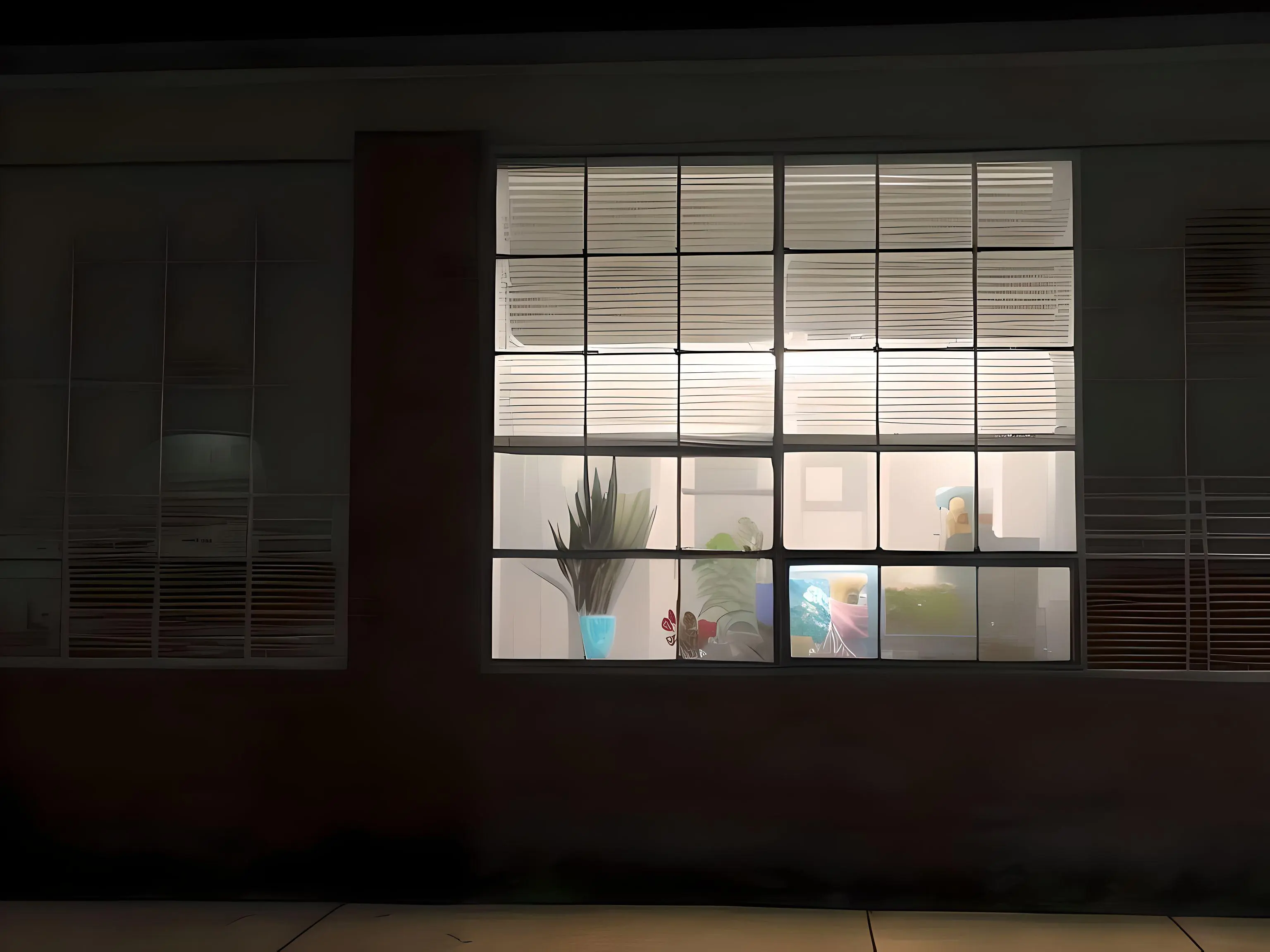cross-posted from: https://sh.itjust.works/post/16676119
I am seriously considering pulling the trigger on a switch to Linux. Looking for advice and discussion
In terms of hardware, what are some good cost effective resources and what what things might I want to consider differently than what I am used to in both the Mac and Windows worlds? I need smart home management, a plex hub, and photo editing, as well as the usual other stuff.
EDIT: When I say photo editing, I am talking about working with RAW files to optimize the image according to my taste and style. I also make use of software that has good library organization capabilites. In this case, I use CaptureOne. I do not generally do the sort of editing people do in photoshop, putting unicorns in their pictures or whatever people do these days. I’m not opposed to cool creative images or anything, I just don’t go down that route terribly often.
My best advice is:
Don’t listen too much about what strangers on the Internet say you should do or use.
Non of us has statistics to pull from. Mostly it’s individual experience mixed with personal preferences. All that could be different for someone else. E.g. some people will have problems with Nvidia, other with AMD.
Stick to the basic and add fancy stuff later on.
Don’t pick a distribution because of the Desktop environment. Or because someone said it has a nifty feature. People create new distros all the time just for fun and not because there would be a real reason for it. Looking on the release cycle would probably be the most basic decision you should take. Read about the differences between “rolling release” and “long time support” and decide base on you personal use case.
Have a backup strategy
This is nothing limited to Linux but since you are planing to switch your habits, there is a high possibility you will mess up at some point. Best would be you try to stimulate the worst case and look if you would be able to setup your system in a VM or something.
Don’t be afraid to try things out
Especially when you know that your backup is working. There is not much you can lose. Don’t be afraid of using Arch Linux e.g. just because someone on the Internet said it’s just for pros or something.
So this last one is maybe just the consequences of all the above. But yeah I guess that’s all I could say for now 😅
There’s no doubt NVIDIA works worse than AMD. That’s just a well known fact.
I have extra old computers I can use for the hardware. Older than 4 years though. I probably would not install on my main machine yet until I know what I am doing. I did use Ubuntu like 10 years ago, and very much enjoyed it, but I’m assuming quite a bit is different and better now.
Love this. It’s related to one of the reasons I have recommended NixOS more often than I would have expected (not, however, as often as Fedora, Mint, etc.): if you’re heading into a new way of using a computer anyway, why not go with something that forces you to abandon assumptions and learn something truly new? With the side benefit of effortless rollbacks if something you fiddle with goes horribly wrong. :)
But, no, at risk of violating rule #1 in your post, just pick a distro, don’t worry too much about which, pick a desktop environment, don’t worry about which, use the machine, and if you have a negative experience only then remember that you can try another desktop environment, distro, etc. Eventually you’ll get to a distrohopping phase, but until then it’s just software and a computer is just a tool.
I’m a noob and dived right into Arch after light mint use on a spare laptop. Still waiting for the mythical update bork or system break.
Well, moving to linux suggests you‘re trying to use it on your desktop, yet the post body suggests you‘re looking for a server.
These are two very distinct projects with vastly different difficulty and complexity levels.
I first made a homeserver for automation (homeassistant), streaming (plex), cloud (nextcloud) and some others. This was fairly straightforward and helped me learn the intricacies of the commandline from the ground up. I have no desktop environment on said server so I was forced to learn to ssh into it and my understanding grew quite fast.
After 2 yrs of this server running more or less without hickups (some minor mistakes made by me), I switched my desktop and lo and behold, it was quite a mess. Desktop linux is infinitely more complex than server linux and the amount of things that can (and probably will) go wrong multiply.
Hardwarewise, you can use the shittiest machine you can find for linux since windows is much more demanding. I even put lubuntu (bc lxqt) on a laptop from 2008 and its glorious! To get streaming in hd pr 4k you‘ll need a fairly strong machine with at least 4 cores and maybe 8-16 gbs of ram.
For the desktop, you‘d ideally go full amd to not have to deal with the mess that is nvidias closed source trashcan drivers. Your games will be all over the place if you play, either they run better, the same or worse than on windows, very few dont work at all, quite a few require tinkering.
But all in all, if you are willing to learn, you‘ll find a distro for yourself. I recently put pop os on a fairly new gaming laptop and it works very well. Mint is the more non gaming variant imo, ubuntu is great for switchers but quite controversial, for more control but also quite a lot more tinkering, you can go debian, arch or gentoo. The last two I consider absolute tinkerers distros. There are hundreds more but thats for later.
Good luck and feel free to update on your progress or ask follow up questions.
I don’t think you should proactively “switch to Linux”. Instead you should “play with Linux”, ideally duel boot and a day will come when you can’t remember the last time you used Windows.
duel boot
⚔️
It’s time to d-d-d-duel boot
Trial by combat. May the last OS standing win. :p
So we’re doing uptime now? I’m afraid Arch will never make it with all that update.
It’s all well and good until windows overwrites the bootloader
For your photo needs, you could try out RawTherapee and Darktable. They have builds for Windows and MacOS.
Darktable has an astonishingly odd UI. It’s a very, very powerful piece of software, but the workflow and assumptions are unlike any other software tool I’ve used. That’s not necessarily a bad thing, but if you’re looking to make a few luminosity adjustments as in Lightroom, it’s going to feel alien. RawTherapee isn’t, I suppose, as powerful at the top end, but it’s much more accessible initially.
You might also want to look at Rapid Photo Downloader for easy and consistent photo importing to the filesystem.
Thanks!
Linux supports a lot of hardware, the problem rise mostly on wireless cards. Thinkpads should be the most supported, other than linux first laptops. If you are building one, take a look at https://linux-hardware.org (where people uploads probes of their hardware). If you want to save you a headache, avoid nvidia. I never used it, but I’ve read a lot of issues related to it. Maybe someone else here can say more about it.
For distro choosing, nowaday almost all the biggest distros should be able to do anything. So the choose is about desktop environments (DE). Are you coming from Windows or from Mac?
If you are coming from Windows, then I would recommend Linux Mint with Cinnamon DE, because:
- It is based on Debian (so it gets a lot of support)
- Windows like GUI
- Good default settings
- Flatpak preinstalled
- Good customization
If you are coming from Mac, then I would recommend Fedora Linux with Gnome DE, because:
- MacOS like GUI
- Good default settings
- Flatpak preinstalled
- Good customization (thru extensions)
But on Fedora you should install mesa and codecs from rpmfusion.
Remember: always prefer the software store to install apps.
install mesa and codecs from rpmfusion
op most likely doesn’t know what that means
A quick lookup on ddg should be enough.
But yes, it is indeed more advanced stuff.
The “what you go for it’s entirely your choice” mantra when it comes to DE is total BS. What happens is that you’ll find out while you can use any DE in fact GNOME will provide a better experience because most applications on Linux are design / depend on its components. Using KDE/XFCE is fun until you run into some GTK/libadwaita application and small issues start to pop here and there, windows that don’t pick on your theme or you just created a frankenstein of a system composed by KDE + a bunch of GTK components.
Mh… No.
SteamDeck uses KDE Plasma. So just this push the development of it. Xfce is made with gtk.I don’t know if most apps are GTK, but indeed it is full of QT, Tk, etc. apps out there. And anyway it does not matter, those runs well on every DE. If you want to make them follow system theme take a look at archwiki. The only issue is QT and GTK have a lot of different dependencies.
The truth is that you have to chase wayland, because it is the future.
The truth is that you have to chase wayland, because it is the future.
Ahahaha nice one.
I know, I know. Waylands breaks everythings, xorg just works, etc.
But that’s the truth: Wayland is the way to go.
Maybe in 2 or 5 years, but still the way to go.Development on that side should be encouraged. Xorg will not get other updates.
I myself use xorg on desktop and wayland on laptop (both Gnome, but I’m coming from XFCE). I know what I say.
Maybe in 2 or 5 years
I swear I’ve been hearing that since Ubuntu first switched to wayland in 2017 (and then promptly reverted back to xorg)
I hope with steamdeck popularity things will speed up.
Intel or AMD CPU, AMD GPU, any RAM, SSD/NVME, PSU, etc.
For photo editing, if you use Photoshop, you should know it doesn’t work on Linux. Your choices are:
- Adobe Creative Cloud Photoshop
- Photopea
- GIMP
- Krita (not the same but it might be of use depending on your use case)
Linux runs great on most hardware. What you described will function fine with a 4-year old laptop or desktop with integrated graphics as long as you have a decent processor (i5/i7 or ryzen 7) and enough RAM (16BG) and an ssd. Two ssds, one for OS and the other for storage is also a good idea.
I suggest ubuntu.
Side note: for photo editing, GIMP or Krita are the go-to apps but neither offer good CMYK color space of you’re printing stuff.
Good luck! Don’t get discouraged learning new things.
I would advise you get Debian + GNOME and install all software via flatpack/flathub. This way you’ll have a very solid and stable system and all the latest software that can be installed, updated and removed without polluting your base system. The other option obviously is to with those hipster of a systems like pop, mint and x-ubuntu that are perpetually “half made” and fail often.
Now I’m gonna tell you what nobody talks about when moving to Linux:
- The “what you go for it’s entirely your choice” mantra when it comes to DE is total BS. What happens is that you’ll find out while you can use any DE in fact GNOME will provide a better experience because most applications on Linux are design / depend on its components. Using KDE/XFCE is fun until you run into some GTK/libadwaita application and small issues start to pop here and there, windows that don’t pick on your theme or you just created a frankenstein of a system composed by KDE + a bunch of GTK components;
- I hope you don’t require “professional” software such as MS Office, Adobe Apps, Autodesk, NI Circuit Design and whatnot. The alternatives wont cut it if you require serious collaboration and virtualization, emulation (wine) may work but won’t be nice. Going for Linux kinda adds the same pains of going macOS but 10x. Once you open the virtualization door your productivity suffers greatly, your CPU/RAM requirements are higher and suddenly you’ve to deal with issues in two operating systems instead of just one. And… let’s face it, nothing with GPU acceleration will ever run decently unless big companies start fixing things - GPU passthroughs and getting video back into the main system are a pain and add delays;
- Proprietary/non-Linux apps provide good features, support and have tons of hours of dev time and continuous updates that the FOSS alternatives can’t just match.
- Linux was the worst track ever of supporting old software, even worse than Apple;
- Half of the success of Windows and macOS is the fact that they provide solid and stable APIs and development tools that “make it easy” to develop for those platforms and Linux is very bad at that. The major pieces of Linux are constantly and ever changing requiring large and frequent re-works of apps. There aren’t distribution “sponsored” IDEs (like Visual Studio or Xcode), userland API documentation, frameworks etc.;
- The beautiful desktop you see online are bullshit with a very few exceptions. Most are just carefully designed screenshots but once you install the theme you’ll find out visual inconsistencies all over the place, missing icons and all kinds of crap that makes Microsoft look good;
- Be ready to spend A LOT of time to make basic things work. Have coffee and alcohol (preferably strong) at your disposal all the time.
(Wine for all the greatness it delivers still sucks and it hurts because it’s true).
These are fair warnings but increasingly exaggerated toward the end. Ubuntu will work just fine with a minimum of “getting basic things to work.”
The most important item in the list is that proprietary software is often just better, and not available on Linux, and wine sucks.
I suggest Ubuntu. It’s heavily managed and takes care of basic stuff. I’ve heard the same about Fedora but I never used it.
Ubuntu will work just fine with a minimum of “getting basic things to work.” (…) I suggest Ubuntu.
I don’t disagree with you, Ubuntu may make be easier but with it you get the worst of both worlds - no “good” and “solid” proprietary apps + questionable open-source, potential spyware and other shenanigans Canonical is known for. In that case I would rather keep using Windows and have everything working out of the box.
If one lives in a bubble and doesn’t to collaborate then native Linux apps might deliver a decent workflow. Once collaboration with Windows/Mac users is required then it’s game over – the “alternatives” aren’t just up to it. Proprietary applications provide good and complex features, support, development time and continuous updates that FOSS alternatives can’t just match.
Windows licenses are cheap and things work out of the box. Software runs fine, all vendors support whatever you’re trying to do and you’re productive from day zero. Sure, there are annoyances from time to time, but they’re way fewer and simpler to deal with than the hoops you’ve to go through to get a minimal and viable/productive Linux desktop experience. It all comes down to a question of how much time (days? months?) you want to spend fixing things on Linux that simply work out of the box under Windows for a minimal fee. Buy a Windows license and spend the time you would’ve spent dealing with Linux issues doing your actual job and you’ll, most likely, get a better ROI.
You can buy a second hand computer with a decent 8th generation CPU for around 200 € and that includes a valid Windows license. Computers selling on retail stores also include a Windows license, students can get them for free etc. what else?
I’ll be brief because I’m on the go.
Most of the points above are sheer lunacy.
Enlightening me then…
Debian may be good for company servers but not for many end users. It’s just too old and slow.
Not sure where you got the idea it was slow… but okay, keep using your perpetual half made Mint/Pop/Arch whatever. :P
Btw. I’m on atomic fedora. If I want I can roll back to the age of debian or the age of arch within minutes without bricking my system.
slow moving … updates … you roughly described it in your post. It stays where it is for a long time.
… which may be good for servers and companies and some people. Most people will prefer an up to date distro.
Just install your software using Flatpak and the latest with a reliable OS.
Agreed 👍🏻
What’s the issue with Pop? I’ve never had issues with it.
You’re not wrong but …Linux is a lifestyle not an opening system.
I wouldn’t have gotten a penguin tattooed above my butt cheek if it wasn’t.
Fair enough, but I don’t want to have to battle my computer every time single I want to get anything done… and most of the Linux community forgets that the general public kind of shares that opinion.









